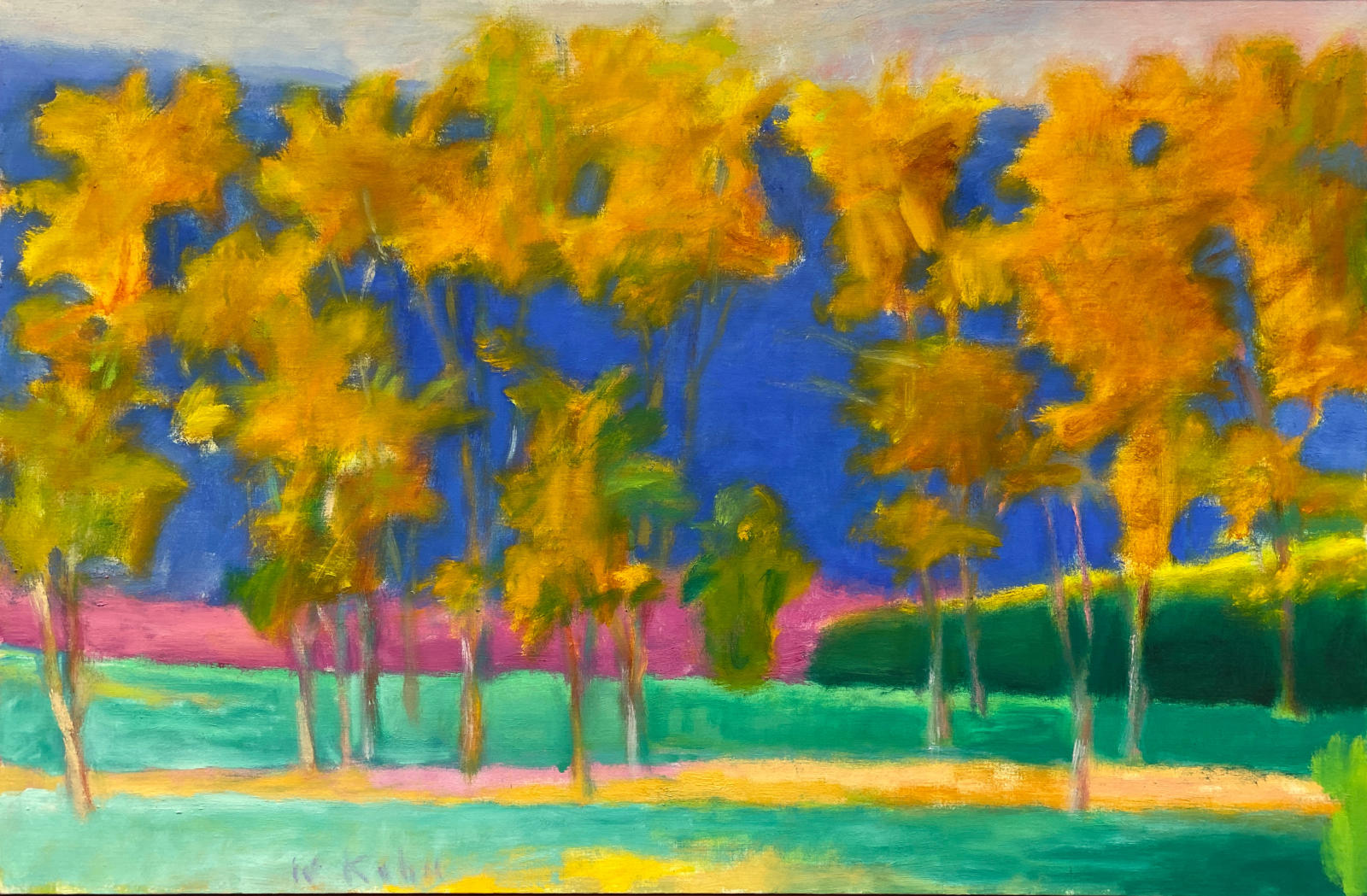











Framed: 23 x 35 inches
Marked: Bright Tree Row II 1996 (verso on stretcher)
artist
Known to balance his color palette with unmatched finesse, Wolf Kahn creates landscape paintings that have a luminosity unsurpassed by other artists. His well-balanced colorist technique of depicting landscapes has made him one of the most influential American artists of our generation. Kahn has formulated a unique way in which he employs simplified geometric designs while carefully contrasting numerous colors and tones. With studios in both New York and Vermont, Kahn is able to draw his artistic inspiration directly from scenes in nature.
A native of Stuttgart, Germany, Wolf Kahn attended the Hans Hofmann School of Fine Arts in New York City. It was here that he and a group of young artists, under the direction of Hans Hofmann, forged a style that was both representational and Abstract Expressionistic. Hans Hofmann's didactic artistic theories proved to be one of the most significant influences upon Kahn's work. In his own words,
"We who studied with Hofmann felt ourselves to be the bearers of a more profound message, one better suited to give content and weight to the calling of 'artist.' We felt we were learning the essence of modernism, art stripped of everything extraneous. What remained was its esthetic/philosophical foundation, its raison d'être."
These progressive artists included Nell Blaine, Jane Freilicher, Allan Kaprow, Jan Muller, and Larry Rivers. They adopted Abstract Expressionistic spontaneity with the idea that the finished piece was an accumulated history of a process, a visual representation of energetic action and reaction. His influences and inspiration can be found in the works of such European artists as Braque, Bonnard, Soutine, and Van Gogh. Kahn embraced the ideas of the Old Masters as well as those of Impressionism, Expressionism, and Post-Impressionism.
Description
Bright Tree Row II by the renowned American colorist Wolf Kahn combines the free-flowing energy of the Abstract Expressionist Movement with the solidity of landscape painting. This type of composition by Kahn, where he pares down the trees to delightful spots of color and then uses surprising color choices in swaths of the landscape is some of his most appealing work. A smaller canvas by the artist but exceptional in choices of color which interestingly convinces us. Kahn was at his best when he used the Magenta pink color that he inspirationally uses near the green. He has actually set up a structured landscape by positioning himself to paint a “row of trees” which creates for a repetitious pattern our eye moves along punctuated by the yellow. Kahn was adventurous at times and this is a canvas that demonstrates a day where he artistically took chances. In the 1990’s Kahn has enough mature experience to strike out with great ideas. Later he would tend to repeat what worked well but at this point he is still very experimental and sure of himself.
This bold luminous painting explodes with color, reimagining a fall sunset in New England. There is a certain wonder of the ordinary and natural world that Kahn has captured on his canvas, and which brings the viewer a multi-sensory personal experience of a certain place in nature. Kahn has succeeded in bringing together both vertical and horizontal lines, and most importantly brilliant and powerful colors that seem to spring to life and to virtually leap off the canvas in spontaneity.
Interesting to note that this work was owned by an energetic and highly respected fellow whose biography is as vibrant as this painting. Lon Williams Homeier had a successful career at UBS and other institutions but was noted for his hobbies and character. He had a military background and went on to be on boards such as the Glacier National Park Association and the Governor’s Commission on Prisons.
Wolf Kahn’s well-balanced colorist technique of depicting landscapes has made him one of the most influential American artists of our generation. A native of Stuttgart, Germany, he attended the Hans Hofmann School of Fine Arts in New York City. It was here that he and a group of young artists, under the direction of Hans Hofmann, forged a style that was both representational and Abstract Expressionistic. Hans Hofmann’s didactic artistic theories proved to be one of the most significant influences upon Kahn’s work.
provenance
Freeman's, Philadelphia PA 2025











